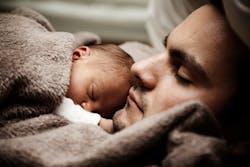The U.S. Food and Drug Administration has authorized the marketing of a new prescription-only device intended to reduce snoring and mild obstructive sleep apnea. Unlike devices used while patients sleep, this is the first device used while awake that is intended to improve tongue muscle function, which can help prevent the tongue from collapsing backwards and obstructing the airway during sleep, the agency said in a news release.
Obstructive sleep apnea is categorized by the number of apneas (pauses in breathing) plus the number of hypopneas (periods of shallow breathing) that occur, on average, each hour. This number, called the Apnea-Hypopnea Index (AHI) measures the severity of OSA. Mild OSA is defined as an AHI score of more than five but less than 15.
The device, the eXciteOSA, is a removable tongue-muscle stimulation device that delivers neuromuscular stimulation to the tongue to reduce snoring and mild sleep apnea for patients who are 18 years old or older.
The eXciteOSA device works by delivering electrical muscle stimulation through a mouthpiece that sits around the tongue. The eXciteOSA mouthpiece has four electrodes, two located above the tongue and two located below the tongue. The device provides electrical muscle stimulation in sessions that consist of a series of electrical pulses with rest periods in between. It is used for 20 minutes once a day during a wakeful state, for a period of 6‐weeks, and once a week thereafter.
The FDA assessed the safety and effectiveness of the eXciteOSA device in 115 patients with snoring, including 48 patients with snoring and mild sleep apnea. All patients used the device for 20 minutes, once a day for 6 weeks, and then discontinued use for 2 weeks before they were reassessed. Overall, the percent of time spent snoring at levels louder than 40dB was reduced by more than 20 percent in 87 out of the 115 patients. In a 48-patient subset with snoring and mild OSA, the average AHI reduced by 48 percent, from 10.21 to 5.27, in 41 out of 48 patients.
The eXciteOSA device is contraindicated for patients with pacemakers or implanted pacing leads (electrodes); patients with temporary or permanent implants, dental braces, intraoral metal prosthesis/restorations/appliances or dental jewelry in the mouth; patients who are pregnant or may be pregnant; or patients suffering from ulcerations in or around the mouth. The eXciteOSA device is not intended for patients who have or are suspected of having OSA with an AHI of 15 and higher.

